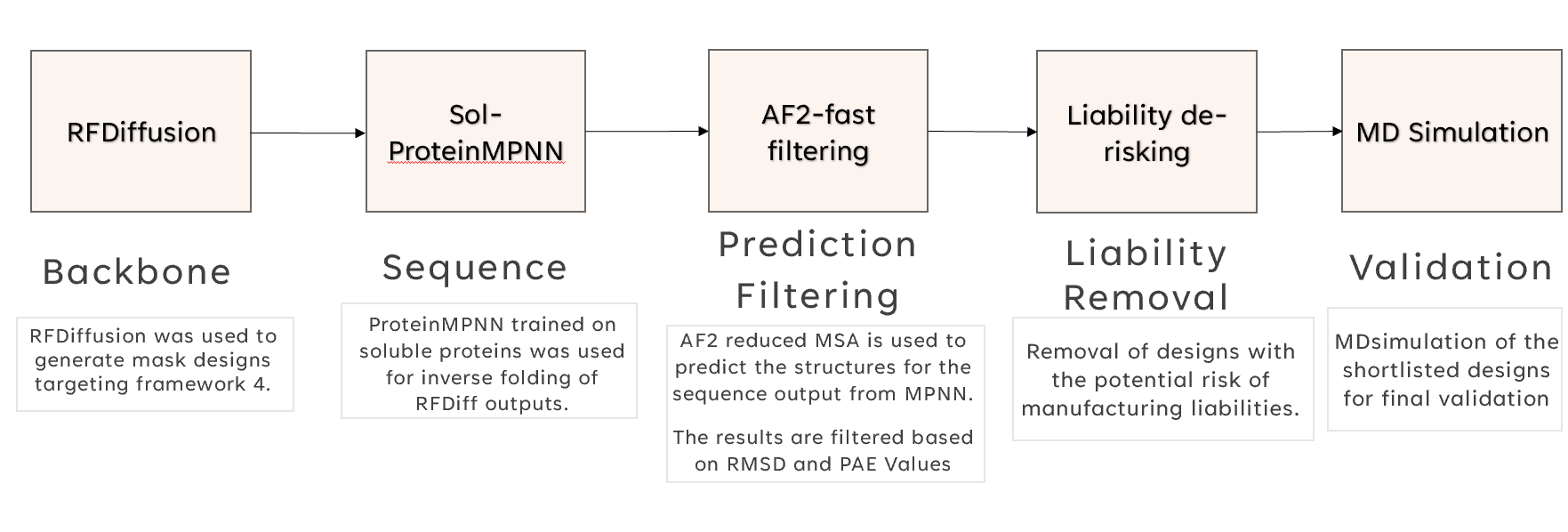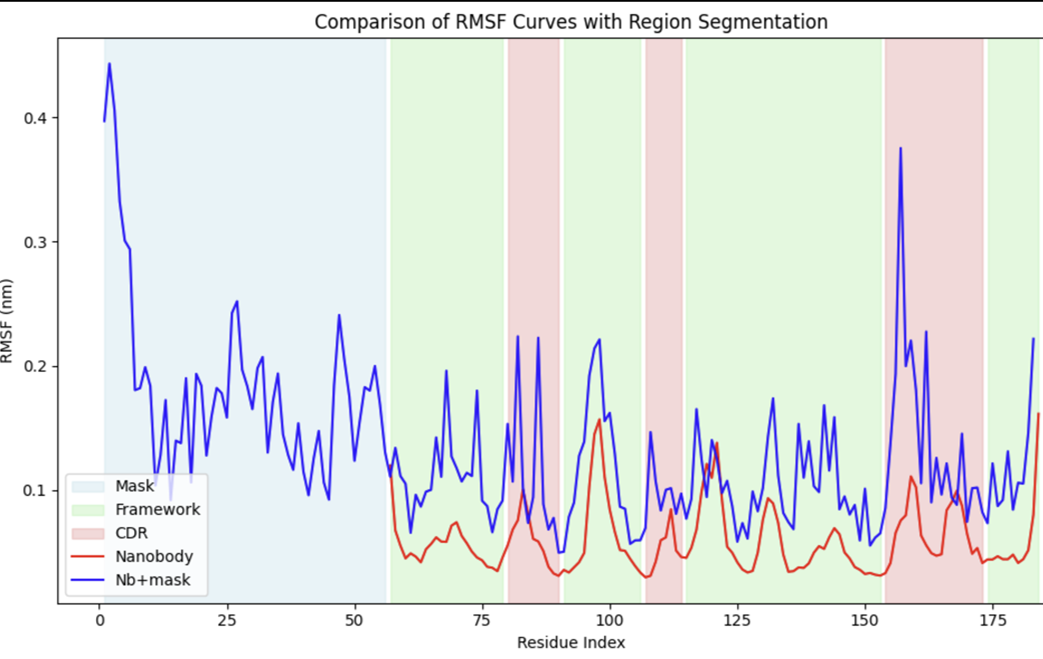Context
I’ve been working at Hummingbird Bioscience to explore AI-driven solutions for protein design and drug discovery. My main focus is on designing novel nanobody “masks” or “locks” that can selectively activate therapeutic antibodies in tumor environments, thereby improving precision and minimizing off-target effects.
Antibody Locks & Problem Statement
Antibody Locks: A strategy to keep antibodies inactive until they reach tumor cells. Typically, a peptide “lock” is attached to the antibody’s antigen-binding site via a cleavable linker that tumor-associated proteases can cut.
Nanobody Challenge: Nanobodies have a single-chain format, making traditional coiled-coil masking strategies (developed for full-size antibodies) incompatible. We needed a new approach for attaching a cleavable lock at the nanobody’s N-terminus without disrupting its stability or binding functionality.
Design Pipeline
Below is an overview of our AI-driven workflow for creating de novo peptide masks targeting the nanobody’s CDR region. This single flowchart illustrates each step, from backbone generation to final validation:

RFDiffusion: Generates peptide backbones targeting the
nanobody’s CDR.
Sol-MPNN: Assigns functional sequences to ensure solubility
and stability.
AF2-fast Filtering: Validates structures, discarding any with
RMSD > 5 or PAE > 10.
Liability De-Risking: Removes designs prone to aggregation,
PTMs, or undesired disulfide bonds.
MD Simulation: Confirms stability via RMSF/RMSD analysis,
finalizing the best candidates.
Key Findings
- CDR Conformational Changes: The designed peptide masks induce higher RMSF in the CDR loops, crucial for “locking” the nanobody until protease cleavage.
- High-Confidence Candidates: From 80,000 total sequences, only 30 advanced to MD simulations, and 10 are being tested experimentally.
- Clinical Impact: This pipeline can accelerate targeted nanobody therapies, reducing off-target effects in cancer treatment.
MD Simulation Analysis
Our RMSF/RMSD analysis highlights how attaching a peptide mask alters the nanobody’s CDR loops:

The peaks in RMSF correspond to the CDR regions, which show higher fluctuations under the influence of the mask. Around the ~980th frame, the mask briefly loses contact, causing a drop in CDR RMSF values, further confirming the dynamic interplay between the nanobody’s binding loops and the designed mask.
Full Details
For a deeper dive, including additional slides and data on the entire pipeline:
Download PDF